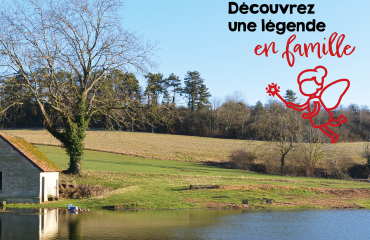En quelques mots
La Fontaine Saint-Bénigne porte le nom d’un saint bien connu dans la région. Ce personnage originaire d’Izmir en Turquie aurait évangélisé les villes d’Autun et Langres et converti de nombreux païens à Dijon au IIe siècle de notre ère. Afin de fuir les persécutions contre les chrétiens, il se serait réfugié a Épagny et aurait été arrêté en 177 ou 178 près de la fontaine qui porte aujourd’hui son nom. Martyrisé à Dijon, son tombeau devint un lieu de culte et de pèlerinage. À son emplacement dans la ville se trouve désormais la cathédrale Saint-Bénigne. De même que son tombeau, la fontaine était autrefois un lieu de dévotion et les malades venaient y puiser de l’eau.
Aujourd’hui la fontaine Saint-Bénigne et son étang sont un agréable lieu de pique-nique.
The St. Bénigne Church is named like this due to a Saint well-known in the region. This figure is from Turkey, and he evangelized the cities of Autun and Langres, and as well convert several pagans in Dijon, during the 2nd C. In order to avoid persecutions against Christians, he took refuge in Épagny and has been arrested in 177 or 118 near this fountain. Tormented in Dijon, his tomb turned into a religious and pilgrimage place. Now, at this place is situated the St Bénigne Cathedral. Furthermore, the St Bénigne fountain is a nice place to do a picnic.
Aujourd’hui la fontaine Saint-Bénigne et son étang sont un agréable lieu de pique-nique.
The St. Bénigne Church is named like this due to a Saint well-known in the region. This figure is from Turkey, and he evangelized the cities of Autun and Langres, and as well convert several pagans in Dijon, during the 2nd C. In order to avoid persecutions against Christians, he took refuge in Épagny and has been arrested in 177 or 118 near this fountain. Tormented in Dijon, his tomb turned into a religious and pilgrimage place. Now, at this place is situated the St Bénigne Cathedral. Furthermore, the St Bénigne fountain is a nice place to do a picnic.








